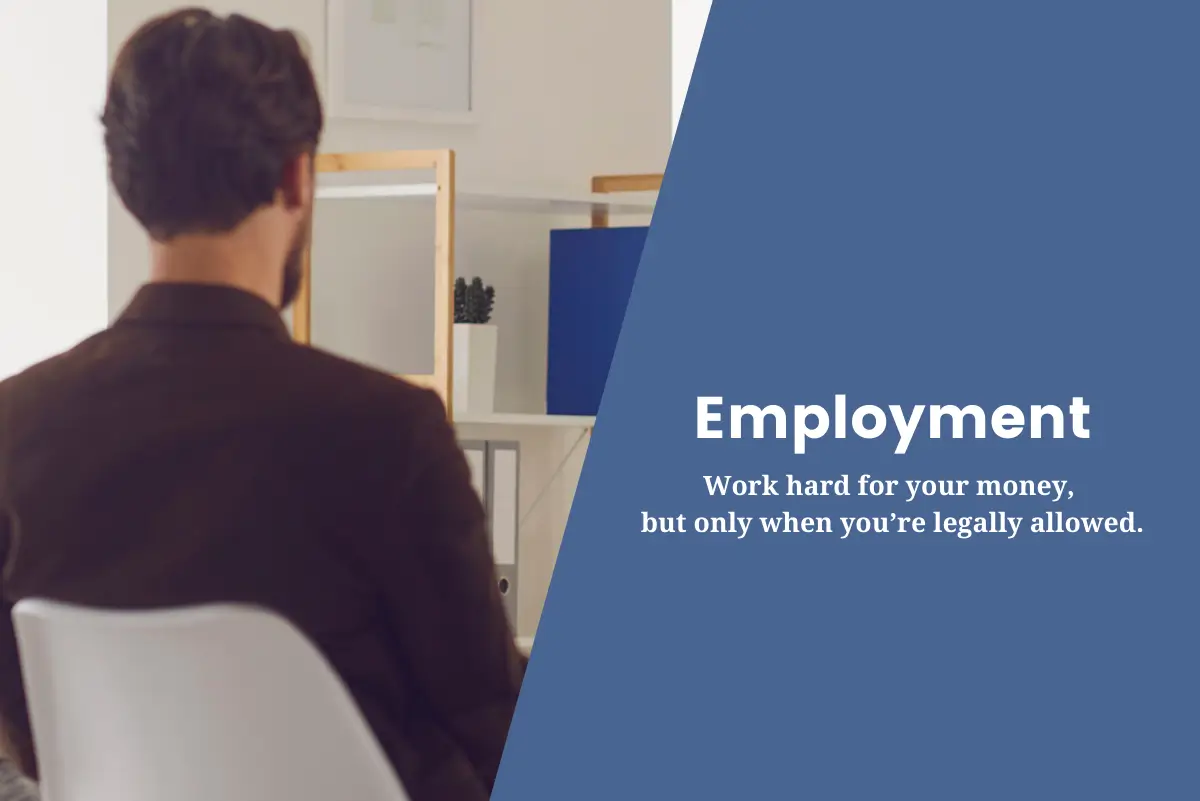Employment

Work hard for your money, but only when youre legally allowed.
Attending school in the USA is super expensive, and even if youre receiving loans or scholarships you might still want some extra cash to do fun things. Though there are numerous work visas available in general, international students are somewhat limited in options. Unfortunately, M-1 visa holders can only work if the job is part of the official training program, and cant work for more than 6 months. For F-1 visa holders, however, there are a few ways you can legally earn money.
On-campus employment
International students can work on campus without special permission from the United States Citizenship and Immigration Services (USCIS). But the types of jobs allowed are pretty specific though the job doesnt technically have to be on campus grounds, it must be related to the school or provide direct services to students. So that means that you can work at the cafeteria on campus or for an off-campus bookstore that sells textbooks and supplies to students, but you cant work as an intern for the company that does landscaping on campus. Students can work up to 20 hours a week during academic terms and can work full time while school is out of session.
Curricular Practical Training (CPT)
CPT allows F-1 visa holders to work off campus in positions that are related to their curriculum or academic program, but youre only eligible for CPT after youve completed your first academic year. Though you can work part time or full time, you still need to be enrolled in and attending classes.
The amount of time you can work under CPT is theoretically unrestricted, but with the caveat that working full time under CPT for a cumulative period of 12 months or more will disqualify you from receiving Optional Practical Training (aka OPT see below and it will make more sense). However, if you work part time or full time for less than those 12 months, youre still eligible for OPT.
Optional Practical Training (OPT)
Like CPT, international students must also complete an academic year before being eligible for OPT. OPT provides a total of 12 months of employment in the USA and must be explicitly related to the course of study listed on your visa. For example, if the focus of your studies is finance, the odds are low that youd be granted OPT authorization for work as a clown.
There are two types of OPT, and they can be used in combination as long as you have permission from your Designated School Official (DSO) to do so. You dont need an official job offer to apply for OPT, and theres even a 60-day grace period after it expires where you can stay in the USA to try to extend or change your visa. But talk to your DSO or your schools international student office when you work on the application (which can take many weeks to be processed) so you can double check that everything is legal.
- Pre-completion OPT is essentially hours worked while youre still enrolled in classes. Those hours are then deducted from the total of 12 months of OPT available to international students.
- Post-completion OPT allows you to work after completing your program, and is really popular since it extends the amount of time you can legally be in the USA and stock up on your new favorite things. But
be aware that if you worked under pre-completion OPT, that time will be deducted from your available post-completion time, so the math for your total OPT time doesnt exceed 12 months.
And heres a bonus: If youve earned a degree in an approved STEM field, you might be eligible to extend your OPT by an additional 24 months with the STEM OPT extension, giving you a total of 36 months of legal work in the USA without needing to change your visa.
Severe Economic Hardship
F-1 students who suffer an unexpected and severe economic hardship are eligible to work for up to 20 hours a week off campus while school is in session and full time during breaks. This exception is only for students whove had their visa for a year or more, and conveniently doesnt affect OPT hours. But you cant lose money at a poker game and expect to be eligible for this special situation USCIS determines each case based on their strict standards. Their guidelines are explicit: students must have lost financial support or previous on-campus employment, faced large increases in tuition and living costs or extreme changes in the exchange rate of their home countrys currency, or received extensive medical bills not covered by insurance.